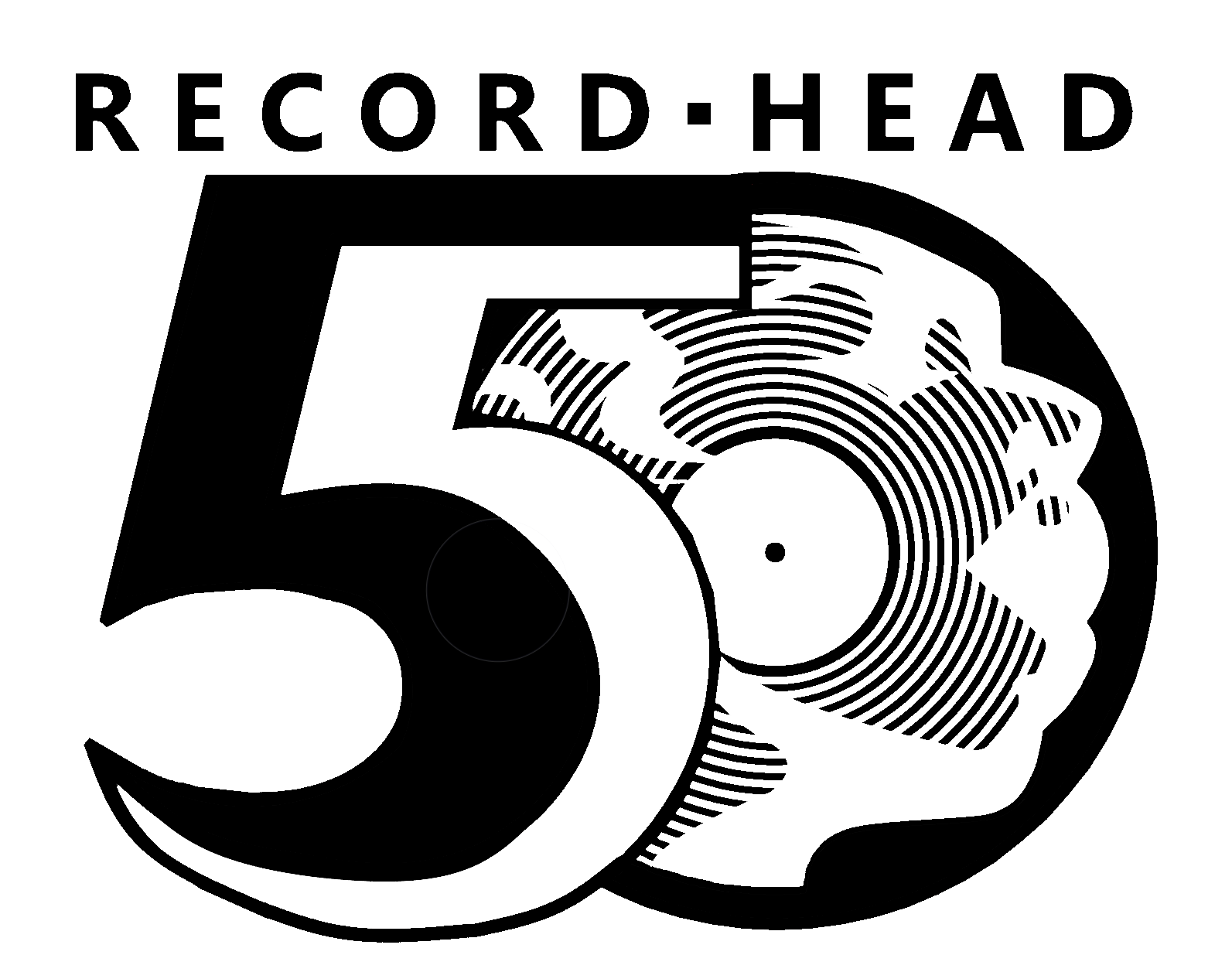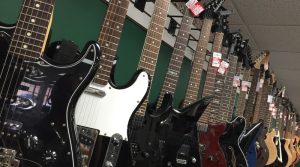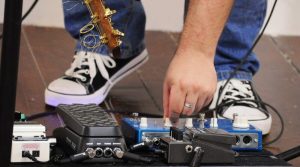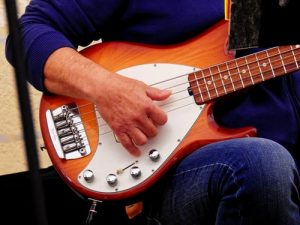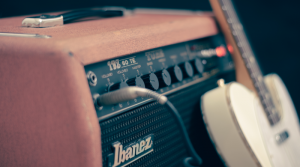Purchasing a guitar for the first time can be very exciting, so congratulations are in order! There are some things to consider as you hunt for your first guitar. Do you want to play an acoustic or an electric guitar? What shape and style do you want?
Do you know what size you need? Are you confused yet? There are so many styles and sizes available that it can seem overwhelming to find the right guitar. Not to worry, because Record Head’s guide will help you get on the right track and choose a guitar that is best for you!
What Guitar Should You Buy?
Choosing the right guitar doesn’t have to be a challenge, but it is not as easy as running to the nearest store and grabbing the first one you see. Deciding on some general things in advance can make the process go along much more smoothly and successfully.
Choosing the Right Guitar: Acoustic vs. Electric Guitars
One of the most significant decisions to make is what kind of guitar you genuinely want to play. A big mistake people make is purchasing an inexpensive guitar and not really liking the sound it makes or the way it plays because it is not the right type. Do you want to play an electric guitar or an acoustic guitar? An easy way to decide is to go by the kind of music you enjoy. If you like heavy metal, go for the electric. If you like country, an acoustic is a safe way to go — but still, the core of country styles lean on electric guitar to achieve the classic twang.
Acoustic guitars give off a bright, loud sound without the help of added sound equipment, which means you can play anywhere and anytime you like. They are strung with steel strings, which can be a bit sharp on beginners’ fingers, although your body will adapt over time. They can be played with fingertips or picks and are considerably less expensive, making them a good option for those on a limited budget.
The sound of an electric guitar can be controlled for various tones and pitches, which can be a lot of fun. String tension and the neck size on electric guitars can make them easier to play. They cost more than acoustic guitars but have a much more extensive selection of colors and shapes.
How to Choose an Electric Guitar
Here’s how to choose a guitar if you’re going for an electric model:
- Accessories: Remember to budget for accessories such as amplifiers, cables and a case since electric guitars require extra sound equipment.
- Type of music you play: Different types of electric guitars are better suited to different music genres. For example, solid-body guitars with high-output pickups and a fast neck are popular choices for rock and metal music. A semi-hollow or hollow body guitar with a warm and smooth tone works well for jazz music. Guitars with single-coil pickups, such as a Fender Stratocaster, offer bright, clean tones, which are ideal for country music.
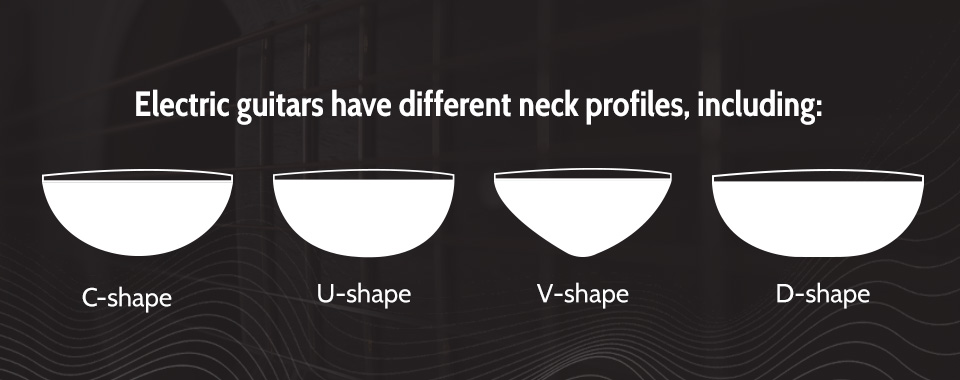
- The neck: Electric guitars have different neck profiles, including C, U, V and D-shaped necks. Try different profiles to see what’s comfortable in your hand. The C shape is popular for its comfortability, whereas the D shape is flatter and wider — preferred by players with wide hand movements. The U-shaped neck offers a more substantial grip, and the V-shape neck comes in a soft and hard style.
- The pickups: Single-coil pickups offer a bright, clear tone, while humbucker pickups have a warmer, thicker sound and reduce noise.
What Size Guitar Should I Get?
A few tips to consider when choosing the right size guitar:
- Find a comfortable hold and position: A guitar that is too large or too small will result in difficulty learning and playing. When holding the guitar for playing, your arm should not be as high as your shoulder. You should also not have to overextend the muscles in your hand to reach the first frets. Physical discomfort should not be a part of playing the guitar.
- Try before you buy: If possible, visit Record Head to try different sizes. Play a few chords and see how comfortable you feel holding the guitar.
- Think about your playing style: If you need a guitar that’s easy to carry around, consider a smaller size. If you plan to perform or record, a full size guitar might be better suited for its fuller sound and projection.
- Consider your age and skill level: For young beginners or those new to guitar, a smaller size is often easier to start with. It can help with learning proper technique and developing finger strength.
- Seek advice: If you’re unsure which size to choose, get advice from one of our professional staff members and experienced guitarists. They can offer guidance based on your specific needs and playing style.
- Budget: While size is important, make sure the guitar fits within your budget. A well-sized and well-made guitar is a better investment than a larger, more expensive one that you might not be comfortable playing. It can be tempting to spend extra when you go out shopping, but a good budget will help you stay true to what you want and can afford. Don’t hesitate to ask for assistance from a sales associate when finding exactly what you want.
Pick a Style You Like
While acoustic guitars have considerably fewer style variations than electric guitars, there are still some excellent options to choose from. Dreadnought-style acoustics have thick bodies, loud sounds and a bigger size. Parlor-style acoustics have thinner bodies and can be played best while seated. Acoustics also have the option of body cutaways, which can affect their sound.
Electric guitars come in so many shapes and colors that the sky is the limit. If you have a favorite color, you can bet it can be found on an electric guitar. If you like pointed edges as opposed to round, you can have that, too.
Settle On a Price
Decide the top dollar amount you are willing to spend and stick to that budget. It can be tempting to spend extra when you go out shopping, but a good budget will help you stay true to what you want and can afford. Don’t hesitate to ask for assistance from a sales associate when finding exactly what you want, but don’t get caught up in being upsold above and beyond your price point.
What Are the Qualities of a Good Guitar?
Now that you have decided which type of guitar is best for you, there is one final step. It is essential to understand what makes a guitar a “good” one worthy of investing time and money.
First things first, always check the quality of the guitar. While a guitar may have a well-known brand name, gorgeous finish and a fantastic price point that is hard to refuse, that does not mean it is the best guitar on the market. Here are some key factors to keep in mind when determining the qualities of a guitar to see if it is worth buying or if you should keep shopping around:
- Tuning gears should be wound appropriately with string and should tune smoothly and accurately. A guitar of good quality will have tuning machines that do not take much time or difficulty to tune.
- Guitars with set-in necks should have stable and secure necks and heels. The neck should not feel as though it could break off. Make sure it is adequately secured and there are no cracks where the neck meets the body.
- Acoustic guitars should not have a bridge with open gaps or an extremely unleveled neck. With the exception of children’s guitars, the wood on the neck should be properly secured to the bridge with glue — nuts and bolts should not hold it together. The level of the neck is also important to note, as a neck with too much of an angle forward or backward can have adjustment issues. A properly angled neck should sit relatively level with the body of the guitar.
- Electric guitars should have secured bridge hardware. An electric guitar that has loose bridge hardware is an indicator to move on to something else. Loosely fitting adjustment screws can become easily stripped over time.
- The string height should be low at the first fret. Test out the proper adjustment of the strings by pressing down with your smallest finger one string at a time on the first fret. If the strings bend excessively, the guitar will most likely be challenging to play.
Ask Questions Before Buying
A poorly made guitar will be disappointing and difficult to play, which could ultimately lead to a complete loss of interest and wasted money. Always remember the importance of buying an inspected and adjusted guitar. Ask questions about the guitar’s playability and consider the pros and cons of the overall make and design before making the final purchase decision.
Get Your Guitar From Record Head
Choosing what kind of guitar you should get is all about finding a balance between comfort, playability and sound quality. Taking the time to consider these factors will help you select a guitar that suits your needs and enhances your playing experience.
Whether you know what guitar you should buy or you need help deciding, visit Record Head in Milwaukee. We’ve got new and used instruments for sale, backed by old-school customer service with a personalized experience. Come visit us to check out our selection!
